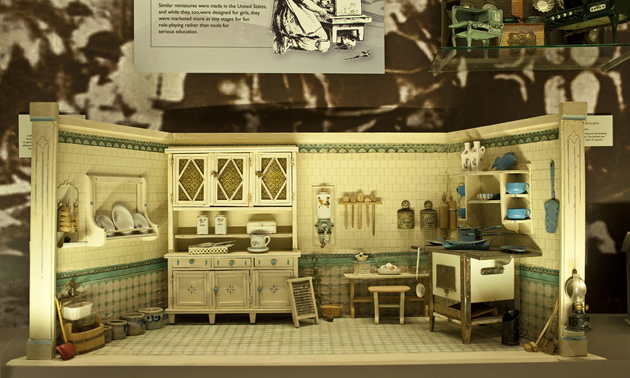Transport yourself through time in Tucson
For an unforgettable and out of the ordinary experience, the Mini Time Machine Museum has it all.

Those who come to Tucson, Arizona, hoping to find something completely out of the ordinary should visit the Mini Time Machine Museum of Miniatures. Housed in a state-of-the-art building, the museum displays and preserves antique and contemporary miniatures.
According to Gentry Spronken, director of marketing and communications at the Mini Time Machine, the museum was created from the imagination and dedication of founders Patricia and Walter Arnell.
"The majority of our permanent collection is Patricia's," she said. "She had been collecting them for over 30 years and decided she wanted to share her collection with the broader public, preserve the art form and promote it to the public."
The experience begins when you first enter the museum. As you enter, you're suddenly in a giant oversized store, which makes you feel like the miniature. You go through the store and come into the lobby, where there is a low ceiling painted like the sky that changes from dusk to dawn, with a shooting star that goes across.
"The concept of the mini time machine was born out of the notion that a visitor would be seemingly transported to different eras by the stories and history of the pieces in the collection," said Spronken.
The experience
The museum’s artifacts are organized into three main areas; the Enchanted Realm, History Gallery and Exploring the World.
The Enchanted Realm is a magical place and the pieces displayed in this gallery reflect that. Here you will find woodland creatures, snow villages, fairy castles and a witches' compound, to name a few.
According to Spronken, the pieces in the History and Antiques Gallery are reflective of different time periods and have historical value and significance. One of the oldest miniature houses in the United States, circa 1775, is part of this collection. You will also find examples of craftsmanship and technique as well as pieces that exemplify contemporary times.
In the Exploring the World gallery, you will see examples of how miniatures are used in other cultures, with items from artisans representing the U.K., France, Germany, Holland, Italy, Japan, Thailand and Spain among others.
"Beginning in the 1700s, miniatures were not intended for children," said Spronken. "They were showpieces for wealthy adults who had commissioned things to be created in miniature form and kept in what they called baby cabinets. When they entertained, they would open these cabinets and show off their miniatures. The purpose changed over time through the Industrial Revolution and became more readily available to the middle class. It then turned the corner and became more of a children's toy. Miniatures were also used as a teaching tool for young girls. They developed little kitchens designed to teach young women how to be homemakers. Some of them have functioning things, like you can put a candle in a stove or put oats in an oat grinder."
There are a few different ways people can explore the museum. Spronken said you can either do a self-guided tour, which could take about an hour and a half, or you can do a guided group tour. Admission is good for the whole day, so people can always leave and come back. She said some people could spend a whole day in the museum taking in all the little details.
"It's definitely very different," said Spronken. "You're not going to find a place like this anywhere else. It's an experience that transforms people and takes them on a journey through different lands and times."






